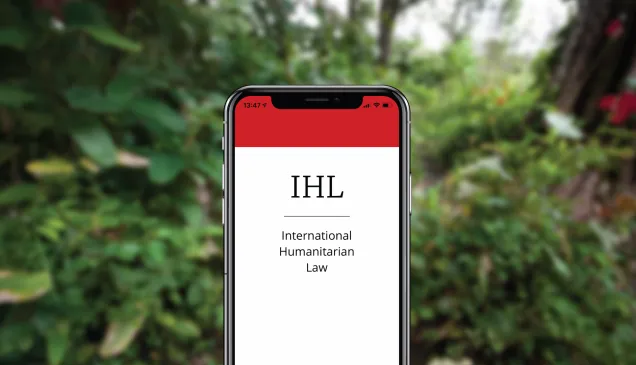Protocols I and II additional to the Geneva Conventions
Adopted on 8 June 1977, Protocols I and II are international treaties that supplement the Geneva Conventions of 1949. They significantly improve the legal protection covering civilians and the wounded, and - for the first time - lay down detailed humanitarian rules that apply in civil wars.
-
They were adopted by States to make international humanitarian law more complete and more universal, and to adapt it better to modern conflicts. The Geneva Conventions of 1949 afforded major improvements in the legal protection of victims of conflict. However, they apply essentially to international conflicts – wars between states. Only Article 3, common to all four Conventions, refers to internal conflicts; its adoption was itself a great step forward but the rules contained in the Article are mainly of a general nature.
In addition, most of the countries that became independent after 1945 “inherited” the Geneva Conventions from the former colonial powers – the adoption of the Protocols was also an occasion for them to contribute to developing the law.
-
Protocol I deals with international armed conflicts, Protocol II with non-international ones, a term that includes civil wars. It was necessary to differentiate between the two situations, as States were not prepared to grant the same degree of legal protection in both cases.
In 2005 a third protocol additional to the Geneva Conventions was adopted, establishing a new emblem, the red crystal, which is equal in status to the red cross and red crescent.
-
In today's wars, civilians suffer the most.
Understanding this, governments from around the world adopted new rules of international law in 1977 to improve the protection that civilians are entitled to in wartime. Known as Protocols I and II additional to the Geneva Conventions, these rules placed limits on the way wars may be fought. They were especially created to deal with the changing nature of armed conflict and advances in weapons technology.
The duty to distinguish between civilians and combatants is a key feature of the Additional Protocols. They say that all sides of an armed conflict must draw this distinction and th at no one may target civilians. The warring parties must also distinguish between civilian objects, such as homes and places of worship, and military targets.
-
In wartime, civilians suffer the most. Families are separated. Homes are destroyed. Food and water is scarce. Schools close. People are wounded or killed. Lives are shattered.
Additional Protocols I and II say that civilians must be spared the worst effects of conflict. They represent a milestone in the long history of efforts by the ICRC and the international community to secure greater protection.
Additional Protocol I lays down rules on the how wars may be fought. Combatants must take all feasible precautions in choosing weapons and methods of warfare in order to avoid incidental loss of life, injury to civilians and damage to civilian objects.
Additional Protocol II was the first-ever international treaty devoted exclusively to protecting people affected by non-international armed conflicts, or civil wars.
The Additional Protocols also:
- grant protection to all medical personnel, units and means of transport so that civilians can receive medical care during wartime
- require the warring parties to search for missing persons from the opposing side
- strengthen the obligation to provide civilians with food, water and other essentials
-
The Additional Protocols include rules especially designed to protect both civilians and combatants.
They stipulate that:
- combatants must not pose as civilians
- indiscriminate attacks are not allowed
- acts of violence - or threats to commit them - whose primary purpose is to spread terror are prohibited
- objects indispensable to the survival of communities must not be destroyed
-
Those who are not, or no longer, taking part in an armed conflict must be protected, respected and treated humanely. The Additional Protocols say that:
- All wounded and sick people, both civilian and military, must be collected and cared for, without discrimination.
- Women and children must be respected and protected from any form of indecent assault.
- Children and adolescents must be protected from the effects of war. They must not be allowed to take part in hostilities.
- Members of families separated by conflict should be reunited and they should be able to exchange personal messages. They also have the right to be informed of what has happened to missing relatives.
-
Combatants also are entitled to protection.
The Additional Protocols say that:
- Suffering inflicted on an opponent must not go beyond what is necessary to achieve a legitimate military objective.
- Combatants no longer capable of fighting may not be attacked.
- In an international conflict, captured combatants must be presumed to be prisoners of war, and are therefore entitled to protection under the Geneva Conventions.
- Prisoners of war who cannot be cared for must be set free
-
The Additional Protocols are relevant for all current armed conflicts.
Additional Protocol I concerns international armed conflicts, that is, those involving at least two countries.
Additional Protocol II is the first international treaty that applies solely to civil wars and sets restrictions on the use of force in those conflicts.
In 2005 a third protocol additional to the Geneva Conventions was adopted, establishing a new emblem, the red crystal, which is equal in status to the red cross and red crescent.
-
Every country has ratified the Geneva Conventions, making them universally embraced.
It is important to ensure that the Protocols attain the same universality as that achieved by the Geneva Conventions. -
-
A third Additional Protocol was adopted in 2005. This treaty established an additional emblem, the red crystal, having the same status as the existing red cross and red crescent emblems.
-


